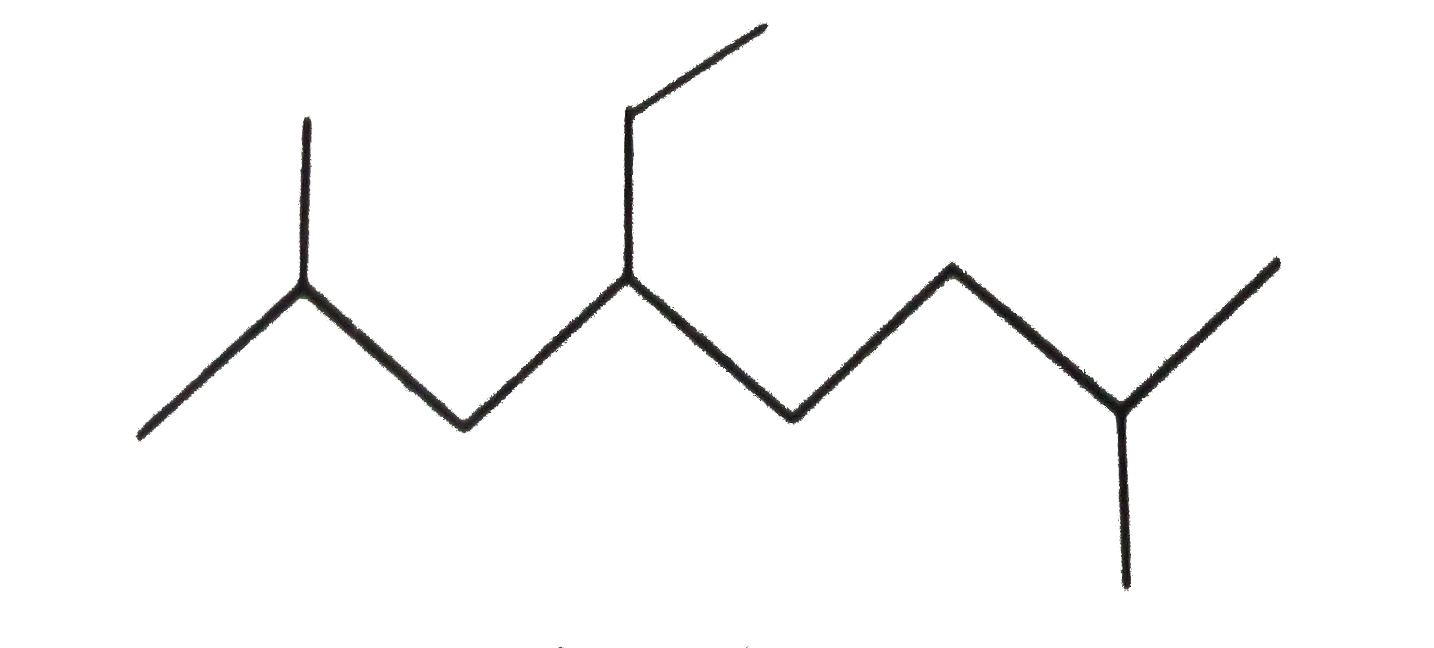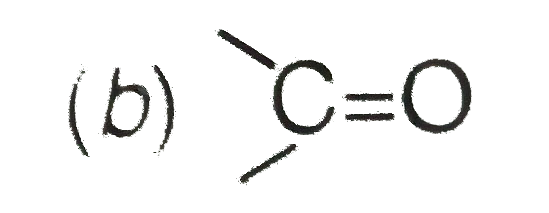when the electrons move towards the substituent attached to the conjugated system_______effect occurs .
−R
+R
−I
+I
The correct Answer is:A
Topper's Solved these Questions
- BASIC CONCEPTS OF ORGANIC REACTIONS BOOK - SURA PUBLICATIONCHAPTER - BASIC CONCEPTS OF ORGANIC REACTIONS EXERCISE - ADDITIONAL QUESTIONS (CHOOSE THE CORRECT ANSWERS 2 MARK )
14 Videos
- BASIC CONCEPTS OF ORGANIC REACTIONS BOOK - SURA PUBLICATIONCHAPTER - BASIC CONCEPTS OF ORGANIC REACTIONS EXERCISE - ADDITIONAL QUESTIONS (SHORT ANSWERS QUESTIONS)
7 Videos
- BASIC CONCEPTS OF ORGANIC REACTIONS BOOK - SURA PUBLICATIONCHAPTER - BASIC CONCEPTS OF ORGANIC REACTIONS EXERCISE - EVALUATION (II. WRITE BRIEF ANSWER TO THE FOLLOWING QUESTIONS)
9 Videos
- BASIC CONCEPTS OF CHEMISTRY AND CHEMICAL CALCULATIONSBOOK - SURA PUBLICATIONCHAPTER - BASIC CONCEPTS OF CHEMISTRY AND CHEMICAL CALCULATIONSEXERCISE - REDOX REACTION ACTIVITY
35 Videos
- CHEMICAL BONDINGBOOK - SURA PUBLICATIONCHAPTER - CHEMICAL BONDINGEXERCISE - Evaluate Yourself
16 Videos
Similar Questions
The resonance effect is defined as 'the polarity produced in the molecule by the interaction of two π-bonds or between a π-bond and lone pair of electrons present on an adjacentatom.' The effect is transmitted through the chain.
In positive resonance effect, the transfer of electrons is away from an atom or substituent group attached to the conjugated system. This electron displacement makes certain positions in the molecule of high electron densities. In negative resonance effect, the transfer of electrons is towards the atom or substituent group attached to the conjugated system.
Which of the following shows +M effect ?
View SolutionThe resonance effect is defined as 'the polarity produced in the molecule by the interaction of two π-bonds or between a π-bond and lone pair of electrons present on an adjacentatom.' The effect is transmitted through the chain.
In positive resonance effect, the transfer of electrons is away from an atom or substituent group attached to the conjugated system. This electron displacement makes certain positions in the molecule of high electron densities. In negative resonance effect, the transfer of electrons is towards the atom or substituent group attached to the conjugated system.
What is the IUPAC name for :

View Solution
Knowledge Check
The resonance effect is defined as 'the polarity produced in the molecule by the interaction of two π-bonds or between a π-bond and lone pair of electrons present on an adjacentatom.' The effect is transmitted through the chain.
In positive resonance effect, the transfer of electrons is away from an atom or substituent group attached to the conjugated system. This electron displacement makes certain positions in the molecule of high electron densities. In negative resonance effect, the transfer of electrons is towards the atom or substituent group attached to the conjugated system.
Which of the following shows +M effect ?A−N(CH3)2B C−CNDBoth (a) and (c)
C−CNDBoth (a) and (c)The resonance effect is defined as 'the polarity produced in the molecule by the interaction of two π-bonds or between a π-bond and lone pair of electrons present on an adjacentatom.' The effect is transmitted through the chain.
In positive resonance effect, the transfer of electrons is away from an atom or substituent group attached to the conjugated system. This electron displacement makes certain positions in the molecule of high electron densities. In negative resonance effect, the transfer of electrons is towards the atom or substituent group attached to the conjugated system.
What is the IUPAC name for :
 A5-isobutyl-2-methylheptaneB4-ethyl-2, 7-dimethylocatneC5- ehtyl-2, 7-dimethyloctaneD2-methyl-5-(2-methylpropyl) heptane.
A5-isobutyl-2-methylheptaneB4-ethyl-2, 7-dimethylocatneC5- ehtyl-2, 7-dimethyloctaneD2-methyl-5-(2-methylpropyl) heptane.The resonance effect is defined as 'the polarity produced in the molecule by the interaction of two π-bonds or between a π-bond and lone pair of electrons present on an adjacentatom.' The effect is transmitted through the chain.
In positive resonance effect, the transfer of electrons is away from an atom or substituent group attached to the conjugated system. This electron displacement makes certain positions in the molecule of high electron densities. In negative resonance effect, the transfer of electrons is towards the atom or substituent group attached to the conjugated system.
The correct statement regarding a carbonyl compound with a hydrogen atom on its alpha carbon, isAa carbonyl compound with a hydrogen atom on its alpha-carbon rapidly equilibrates with its corresponding enol and this process is known as carbonylationBa carbonyl compound with a hydrogen atom on its alpha-carbon rapidly equilibrates with its corresponding enol and this process is known as keto-enol tautomerismCa carbonyl compound with a hydrogen atom on its alpha-carbon never equilibrates with its corresponding enolDa carbonyl compound with a hydrogen atom on its alpha-carbon radidly equilibrates with its corresponding enol and this process is known as aldehyde-ketone equilibration.
The resonance effect is defined as 'the polarity produced in the molecule by the interaction of two π-bonds or between a π-bond and lone pair of electrons present on an adjacentatom.' The effect is transmitted through the chain.
In positive resonance effect, the transfer of electrons is away from an atom or substituent group attached to the conjugated system. This electron displacement makes certain positions in the molecule of high electron densities. In negative resonance effect, the transfer of electrons is towards the atom or substituent group attached to the conjugated system.
The correct statement regarding a carbonyl compound with a hydrogen atom on its alpha carbon, is
View SolutionThe resonance effect is defined as 'the polarity produced in the molecule by the interaction of two π-bonds or between a π-bond and lone pair of electrons present on an adjacentatom.' The effect is transmitted through the chain.
In positive resonance effect, the transfer of electrons is away from an atom or substituent group attached to the conjugated system. This electron displacement makes certain positions in the molecule of high electron densities. In negative resonance effect, the transfer of electrons is towards the atom or substituent group attached to the conjugated system.
Which of the following does not show resonance effect ?
View SolutionThe resonance effect is defined as 'the polarity produced in the molecule by the interaction of two π-bonds or between a π-bond and lone pair of electrons present on an adjacentatom.' The effect is transmitted through the chain.
In positive resonance effect, the transfer of electrons is away from an atom or substituent group attached to the conjugated system. This electron displacement makes certain positions in the molecule of high electron densities. In negative resonance effect, the transfer of electrons is towards the atom or substituent group attached to the conjugated system.
Which of the following does not show resonance effect ?
View SolutionThe resonance effect is defined as 'the polarity produced in the molecule by the interaction of two π-bonds or between a π-bond and lone pair of electrons present on an adjacentatom.' The effect is transmitted through the chain.
In positive resonance effect, the transfer of electrons is away from an atom or substituent group attached to the conjugated system. This electron displacement makes certain positions in the molecule of high electron densities. In negative resonance effect, the transfer of electrons is towards the atom or substituent group attached to the conjugated system.
Which of the following carboxylate ions is the most stable ?
View SolutionThe resonance effect is defined as 'the polarity produced in the molecule by the interaction of two π-bonds or between a π-bond and lone pair of electrons present on an adjacentatom.' The effect is transmitted through the chain.
In positive resonance effect, the transfer of electrons is away from an atom or substituent group attached to the conjugated system. This electron displacement makes certain positions in the molecule of high electron densities. In negative resonance effect, the transfer of electrons is towards the atom or substituent group attached to the conjugated system.
Which of the following intermediates is pyramidal in shape ?
View Solution
